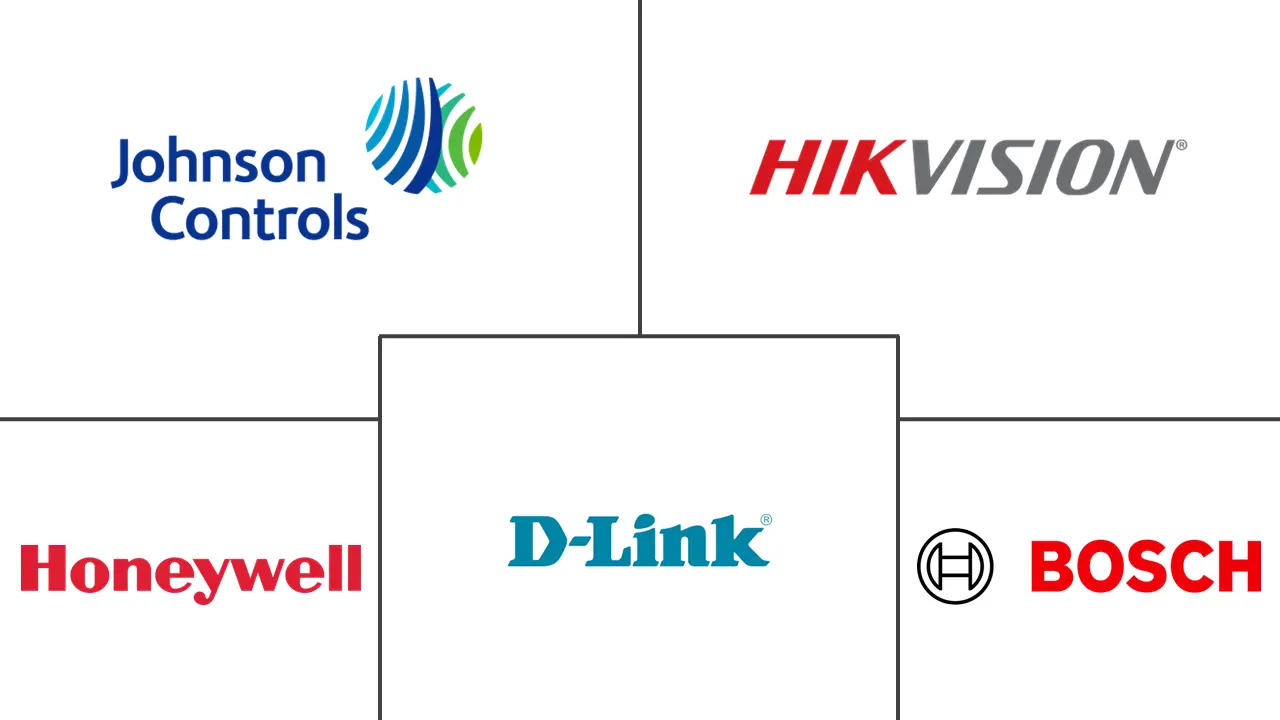Asia Pacific IP Camera Market Size and Share
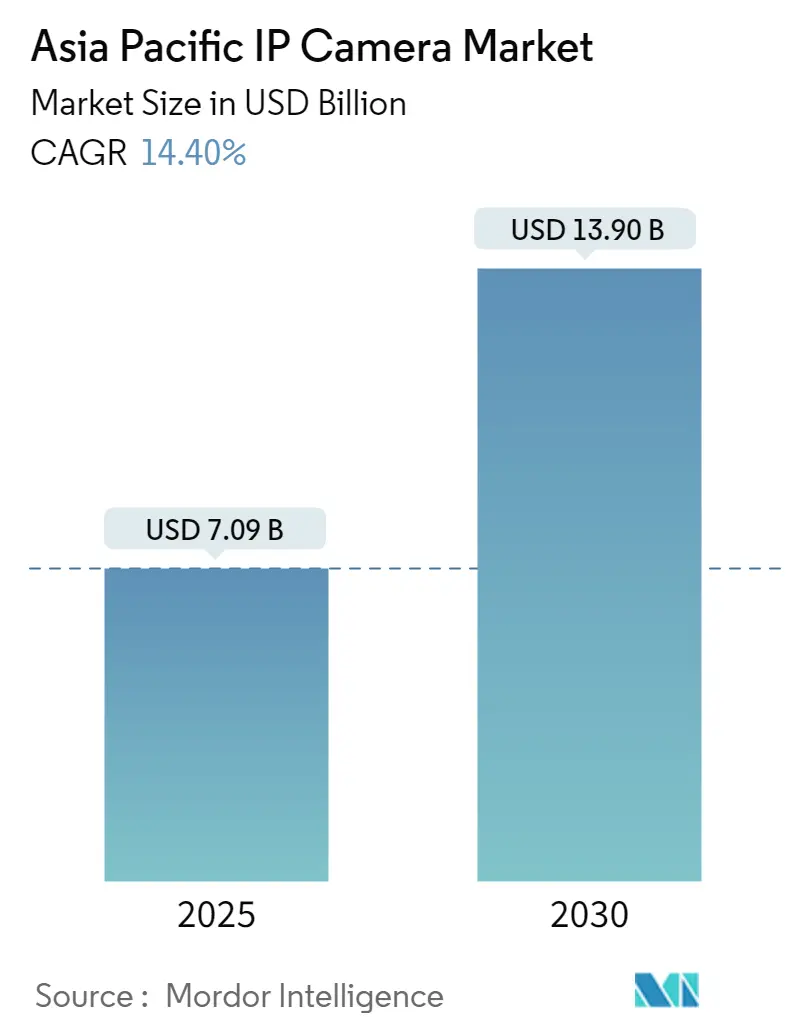
Asia Pacific IP Camera Market Analysis by Mordor Intelligence
The Asia Pacific IP Camera Market size is estimated at USD 7.09 billion in 2025, and is expected to reach USD 13.90 billion by 2030, at a CAGR of 14.4% during the forecast period (2025-2030).
• IP (Internet Protocol) is a digital security camera that transmits video through an IP network. These cameras are used for surveillance purposes. IP cameras do not need a separate recording device; only a local network is required. IP cameras connect to a network in a similar manner as phones and computers do. With increasing concerns about safety and security at the individual and organizational levels, there's a growing need for surveillance systems, including IP cameras, to monitor and protect properties, assets, and people. Each internet protocol camera has a unique IP address for identification purposes. Modern IP cameras have high-resolution lenses providing more apparent surveillance footage than analog ones. The recorded videos can be saved on a computer's hard drive, enhancing security measures.
• The growing use of advanced security systems for various purposes, including public surveillance, home security, and traffic monitoring, is driving a notable increase in the demand for IP cameras. Furthermore, the IP camera market in Asia-Pacific is forecasted to expand due to the surge in investments from private companies, government entities, and academic institutions toward research and development activities (R&D) aimed at innovative technologies in the administration field. The increase in demand for safety in menacing areas, expansion in the shift from traditional surveillance to IP cameras, and incorporation of internet-of-things have all contributed to the expansion of the market's growth.
• Government initiatives to enhance public safety and security, such as innovative city projects and infrastructure development, are driving the deployment of IP cameras in urban areas and critical infrastructure facilities. For instance, in March 2024, the Government of India aims to transform industrial cities into smart cities by integrating advanced technologies through the National Industrial Corridor Development Programme. The government anticipates an average investment of INR 25,000-30,000 crore (USD 2986.84 million - USD 3584.21 million) in the following 10-11 industrial smart cities being developed. The government's investment in each city will range from INR 1,500-2,000 crore (USD 179.21 million - USD 238.95 million). These initiatives are driving the adoption of IP cameras in the region.
• The regulatory complexities and compliance requirements related to data protection, surveillance laws, and privacy regulations may vary across countries in Asia-Pacific, creating barriers to the adoption and implementation of IP cameras. Also, in particularly remote or underdeveloped areas, the need for reliable internet connectivity and infrastructure may limit the deployment of IP cameras. Moreover, the growth of the IP camera market has been hindered by expensive investments in data storage technology and a need for more skilled professionals who can handle IP cameras.
• Macroeconomic factors, like quick technological developments, the rise of alternative security options, and innovative changes in surveillance technology, could present difficulties for conventional IP camera producers, necessitating manufacturers to swiftly adjust to evolving consumer choices and market developments. Furthermore, supply chain disruptions, such as natural calamities and political tensions, may influence the supply of raw materials, components, and final products, resulting in delays in the manufacturing and distribution of IP cameras and impeding market expansion.
Asia Pacific IP Camera Market Trends and Insights
Commercial Sector to Witness a Significant Growth
• The commercial sector is expected to experience a notable increase. This is because of the growing need for advanced security technologies in the banking industry. The rise in theft in retail stores is driving the adoption of modern IP cameras with high resolutions that can alert security personnel about unauthorized access. Numerous companies are now focusing on offering these sophisticated security solutions, particularly for commercial purposes.
• IP cameras are widely used to monitor ATM locations to prevent theft, card fraud, and other criminal activities. Banks install IP cameras at ATM kiosks to capture the video footage of transactions, monitor cash withdrawals, and ensure customers' safety using self-service banking facilities. For instance, during the fiscal year 2023, the Reserve Bank of India (RBI) recorded over 13,000 bank fraud cases nationwide, marking a rise from the preceding year and reversing the past decade's trend. The overall worth of these frauds dropped from INR 1.38 trillion (USD 0.016 trillion) to INR 302 billion (USD 3.61 billion).
• Technological advancements in recent years have dramatically affected the healthcare industry, just like many other sectors. Introducing wireless IP cameras has significantly changed how healthcare facilities monitor their surroundings. These cameras offer a complete surveillance solution for healthcare environments, bringing many advantages that improve patient care, facility management, and security measures. The capability to monitor live video feeds from these cameras allows medical personnel to identify possible problems early, facilitating prompt action and averting adverse incidents.
• In the retail industry, utilizing IP cameras to their fullest potential involves more than just deterring theft and maintaining store security. In the modern, data-focused environment, companies can extract valuable knowledge from the footage recorded by these cameras to enhance customer interaction and ultimately boost sales. IP cameras with advanced features such as video capture, motion detection, and facial recognition help identify suspicious behavior and prevent fraudulent activities.
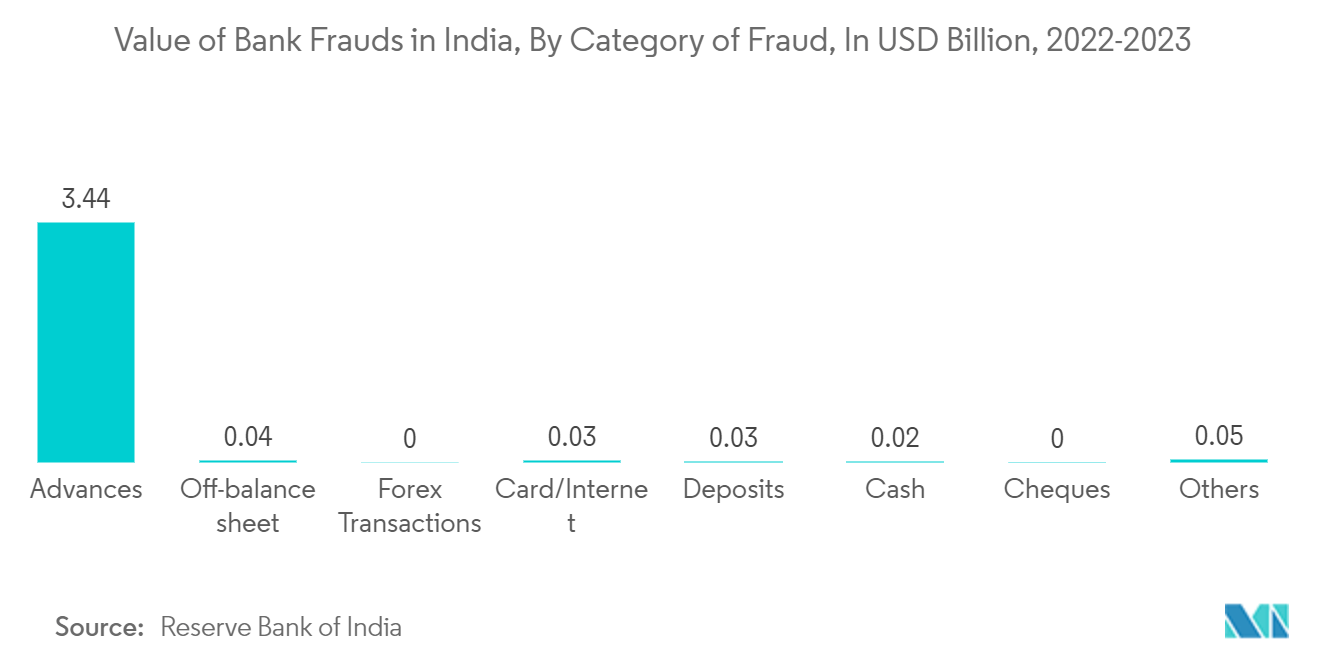
China to Hold a Significant Market Share
• China has a vast network of public surveillance systems, including in cities, transportation hubs, and public spaces. The government's emphasis on public safety and security drives the demand for IP cameras to monitor urban areas, prevent crime, and enhance law enforcement efforts. China is at the forefront of innovative city development, with initiatives to improve urban infrastructure, transportation systems, and public services. IP cameras play a crucial role in innovative city projects by providing real-time video surveillance, traffic monitoring, and crowd management solutions.
• For instance, Beijing, Shanghai, Guangzhou, Shenzhen, and Hangzhou in China are at the forefront of incorporating advanced technologies like the IoT (Internet of Things), big data, AI, and cloud computing in transportation, public safety, the environment, and manufacturing. The rise of smart cities in China has allowed for the incorporation of cutting-edge technologies like AI, big data, IoT, and cloud computing in transportation, public safety, environmental protection, and manufacturing. More than 500 cities in China are reportedly striving to build smart cities.
• With the rising urbanization, homeowners in China are increasingly investing in home security systems, including IP cameras. The demand for IP cameras in residential complexes, gated communities, and high-rise apartments is driven by concerns about burglary, property theft, and personal safety. The increase in home security concerns is linked to the rise in the ability to notify security services and the affordable prices of home security systems, positively influencing the market's growth. The IP cameras enable users to quickly react to any unauthorized entries, abandoned suspicious items, and the unauthorized presence of individuals or vehicles, owing to the built-in video intelligence.
• The rapid expansion of retail chains, shopping malls, and commercial establishments in China fuels the demand for IP cameras to enhance security, prevent theft, and monitor customer behavior. Retailers use IP cameras for loss prevention, inventory management, and marketing analytics. According to the National Bureau of Statistics of China, the construction industry in China produced more than CNY 31 trillion (USD 4.29 trillion)in output in 2023, a nearly 100% increase from the decade prior. Moreover, China's manufacturing sector relies on IP cameras for factory automation, production monitoring, and workplace safety. IP cameras equipped with advanced features such as machine vision, object recognition, and quality control help improve efficiency, reduce downtime, and ensure compliance with industry regulations.
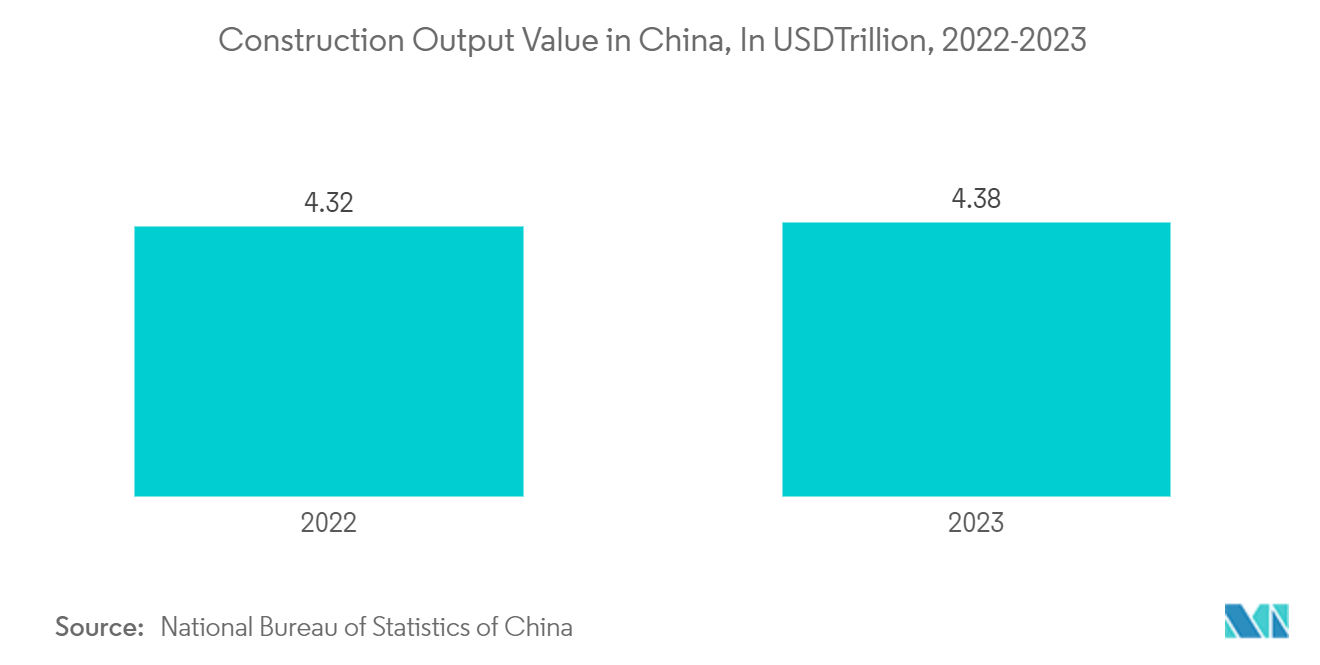
Competitive Landscape
The Asia-Pacific IP camera market is very competitive. The Asia-Pacific IP camera market is fragmented due to the presence of various large and small players. All the major players are focused on expanding the global consumer base. Some significant players in the market are Johnson Controls, Hangzhou Hikvision Digital Technology Co. Ltd, Honeywell HBT, D-Link, Bosch Security and Systems, Sony Corporation, and many more. Several companies are increasing their market share by forming collaborations, partnerships, and acquisitions and introducing new and innovative products to earn a competitive edge during the forecast period.
• March 2024: Hikvision partnered with Can'nX to improve KNX-based building automation. This partnership resulted in Hikvision's advanced AI IP cameras becoming a crucial element in the Can'nX KNX ecosystem. This development allows system integrators to fully utilize machine perception and multi-device coordination to enhance security and building automation. The company is improving security and flexibility in building automation by combining Can'nX's KNX ecosystem with Hikvision's reliable IP cameras for AI analytics.
• January 2024: Sony Electronics collaborated with Nureva Inc., a provider of audio-conferencing solutions, to develop a comprehensive audio and video package for large rooms. This package includes a variety of Sony SRG series pan-tilt-zoom (PTZ) cameras, such as the AI-powered SRG-A40, SRG-A12, SRG-X40UH, and SRG-XP1, along with the Nureva HDL410 audio-conferencing system. Together, these components offer seamless audio-based camera switching for collaboration in both corporate and educational settings.
Asia Pacific IP Camera Industry Leaders
-
Johnson Controls
-
Hangzhou Hikvision Digital Technology Co., Ltd
-
Honeywell HBT
-
D-Link
-
Bosch Security and Systems
- *Disclaimer: Major Players sorted in no particular order
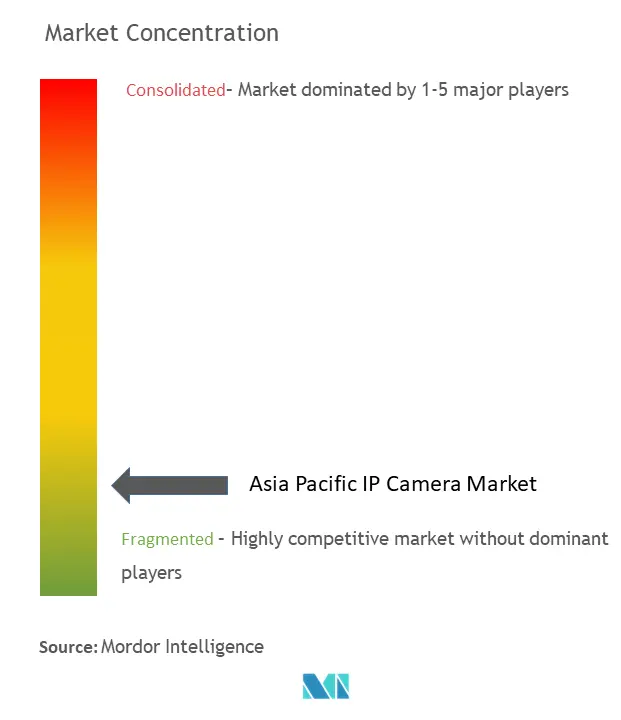
Recent Industry Developments
• April 2024: Sony Electronics will launch a new 4K 60p pan-tilt-zoom (PTZ) camera model called the BRC-AM7, which has a built-in lens. The camera features PTZ Auto Framing technology, utilizing AI technology to precisely and automatically track moving objects. These advancements make producing high-quality videos for broadcast, live events, and sports productions easier. Sony's new PTZ Auto Framing technology, currently available in the SRG-A series of PTZ cameras designed for corporate and educational use, will be incorporated into more models in the future.
• December 2023: Hikvision introduced polymer anti-corrosion cameras known for their enhanced durability and performance. The range includes PTZ cameras, all designed to offer top-quality image clarity. The ColorVu and DarkFighter technologies guarantee clear, full-color images even in dimly lit environments. Additionally, the cameras feature intense supplemental lighting for precise imaging over long distances. The anti-corrosion cameras are equipped with various advanced deep-learning capabilities. One such feature is the Hikvision AcuSense technology, which can differentiate between human and vehicle movements and other moving objects. This helps in minimizing false alarms and notifying security personnel of possible incidents.
Asia Pacific IP Camera Market Report Scope
For market estimation, we have tracked the revenue generated from the sale of types of IP cameras offered by different market players for a diverse range of applications. The market trends are evaluated by analyzing the investments made in product innovation, diversification, and expansion. Further, the advancements in residential, commercial, and industrial end-user industries are also crucial in determining the growth of the studied market.
The Asia-Pacific IP camera market is segmented by type (fixed, Pan-Tilt-Zoom (PTZ), varifocal), end-user industry (residential, commercial [BFSI, education, healthcare, real estate, retail], industrial, government and law enforcement), country (China, India, Japan, and South Korea). The report offers the market size and forecasts for all the above segments in value (USD).
| Fixed |
| Pan-Tilt-Zoom (PTZ) |
| Varifocal |
| Residential |
| Commercial (BFSI, Education, Healthcare, Real Estate, Retail) |
| Industrial |
| Government and Law Enforcement |
| China |
| India |
| Japan |
| South Korea |
| By Type | Fixed |
| Pan-Tilt-Zoom (PTZ) | |
| Varifocal | |
| By End-User Industry | Residential |
| Commercial (BFSI, Education, Healthcare, Real Estate, Retail) | |
| Industrial | |
| Government and Law Enforcement | |
| By Country | China |
| India | |
| Japan | |
| South Korea |
Key Questions Answered in the Report
How big is the Asia Pacific IP Camera Market?
The Asia Pacific IP Camera Market size is expected to reach USD 7.09 billion in 2025 and grow at a CAGR of 14.40% to reach USD 13.90 billion by 2030.
What is the current Asia Pacific IP Camera Market size?
In 2025, the Asia Pacific IP Camera Market size is expected to reach USD 7.09 billion.
Who are the key players in Asia Pacific IP Camera Market?
Johnson Controls, Hangzhou Hikvision Digital Technology Co., Ltd, Honeywell HBT, D-Link and Bosch Security and Systems are the major companies operating in the Asia Pacific IP Camera Market.
What years does this Asia Pacific IP Camera Market cover, and what was the market size in 2024?
In 2024, the Asia Pacific IP Camera Market size was estimated at USD 6.07 billion. The report covers the Asia Pacific IP Camera Market historical market size for years: 2019, 2020, 2021, 2022, 2023 and 2024. The report also forecasts the Asia Pacific IP Camera Market size for years: 2025, 2026, 2027, 2028, 2029 and 2030.
Page last updated on:
Asia Pacific IP Camera Market Report
Statistics for the 2025 Asia Pacific IP Camera market share, size and revenue growth rate, created by Mordor Intelligence™ Industry Reports. Asia Pacific IP Camera analysis includes a market forecast outlook for 2025 to 2030 and historical overview. Get a sample of this industry analysis as a free report PDF download.
